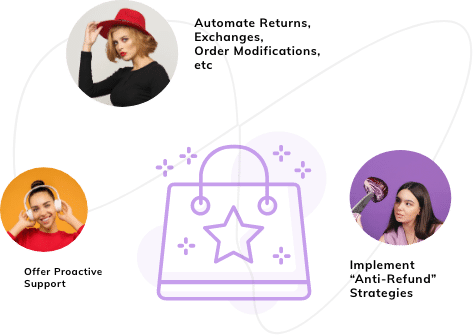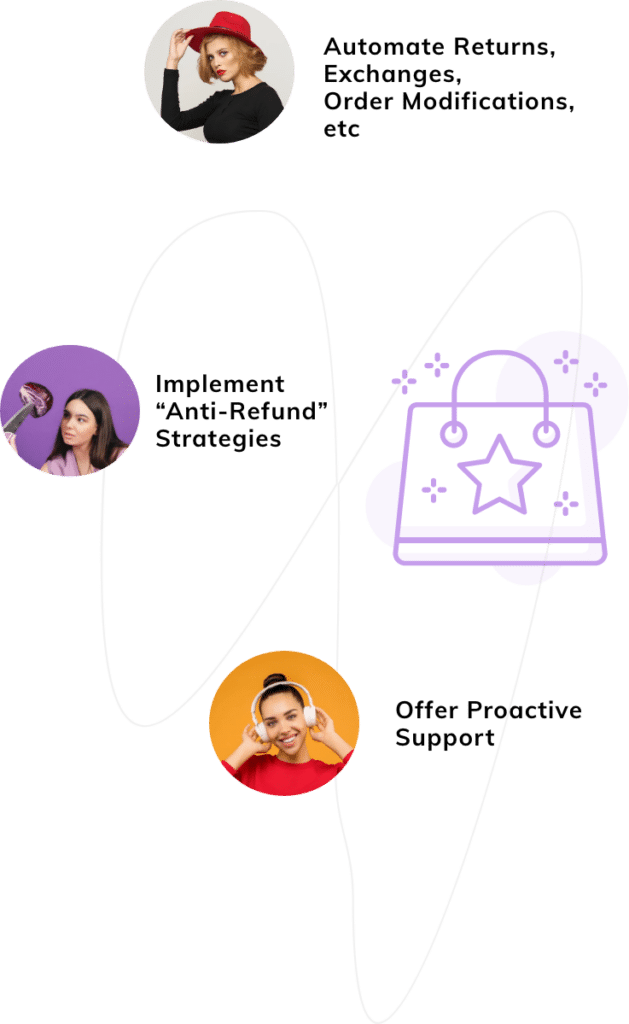Last Updated: April 2024
There are two major approaches to increasing business revenue: Acquiring new customers or increasing the value of existing ones.
You can find numerous marketing strategies that involve acquiring new customers in order to increase sales. However, acquiring a new customer is anywhere from five to 25 times more expensive than retaining an existing one.
Upselling and cross-selling are marketing strategies that target your most valuable potential market: your existing customers.
In this blog post, we’ll go through:
- What are Upselling and Cross-Selling? Why are they Important?
- What is the difference between cross-selling and upselling?
- How can Upselling and Cross-Selling benefit your business?
- Examples of Upselling and Cross-selling
- Some of the Best Practices in Upselling and Cross-Selling
What are Upselling and Cross-selling? Why are they important?
Before we get into the benefits, let’s define upsell and cross-sell.
- Upselling is when you increase an order’s value by encouraging them to purchase additional services or a more expensive model. In other words, it is the process of suggesting a product that will upgrade the primary purchase — and make it more expensive.
- Cross-selling occurs when you sell customers products that complement or supplement previous purchases. Cross-selling is effective when the additional product or service is directly related to the original purchase and benefits the original purchase.
Cross-selling and upselling both focus on adding value to customers rather than restricting them to previously purchased products. In both cases, the business goal is to increase revenue by informing customers about additional product options.
What is the difference between Cross-selling and Upselling?
Let’s look at the differences between upselling and cross-selling:
– Objectives:
Businesses use upselling to persuade customers to buy a more expensive, upgraded version of the chosen item or other add-ons in order to increase order value and profit. Cross-selling is also a strategy used to make a larger sale, but it also helps sell additional products and reduces the amount of sitting inventory in the business.
– Challenges:
Cross-selling focuses on making personalized recommendations of related complementary products, increasing the likelihood that customers will agree with the pitch.
Upselling, on the other hand, can be difficult because it attempts to persuade the customer to purchase a more expensive version of the product. As per studies, 4% of customers will agree on the upsell, and 0.2% will take the cross-sell.
– Products:
Upselling focuses on increasing the value of the purchase by selling a prospect on an upgraded or premium version of the original product. The product is essentially the same, but it costs more. Cross-selling is intended to sell additional products rather than change what the customer already intends to buy.
– Effectiveness:
According to Econsultancy, upselling is 20 times more effective than cross-selling online. So, upselling can be more effective for you to increase the business value of your existing customers.
How can Upselling and Cross-selling benefit your business?
Although these strategies target customers at different stages of their journey, both cross-selling and upselling have significant advantages. Let’s take a closer look:
1. Improves ROI of services/products
The primary benefit of both upselling and cross-selling is that they both seek to increase order value. If you’ve already spent money on marketing to get customers, maximizing order value is important to ROI.
Cross-selling and upselling increase your average order value, and can increase revenues by up to 43% at a low additional cost. In fact, studies show that upsell makes up 2-4% of a company’s overall sales numbers
In some cases, the revenue impact is even greater- according to Amazon, cross-selling and upselling account for up to 35% of their revenue.
2. Easier to sell slow-moving products
While upselling is a more straightforward approach to increasing average order value, cross-selling is still effective for the same goal because it can also be used to sell slow-moving inventory.
For example, if a store sells a lot of phones but not as many battery packs and other accessories as it would like, cross-selling can be very effective at moving this inventory.
To continue with this example, if a customer adds a phone to their cart, the store can suggest a bundle of the phone, a phone case, and a pair of headphones.
When combined with other promotions and discounts for purchasing the bundle, these strategies can be extremely effective.
3. Provides your customers with flexibility and convenience
This study shows that 30% of people purchase to gain something and 70% purchase to solve a problem.
Most customers are unaware of any solutions or upgrades unless you inform them. Offering relevant products/upgrades to your customers ensures that they get the best solution and that you get the best ROI.
4. Increases customer lifetime value(CLV)
CLV or Customer Lifetime Value is a measure of how much net profit your company can generate from a single customer in a given time period. A study by Harvard Business School found that increasing customer retention by even 5% can increase profits by 25–95%.
You will not only increase their lifetime value by increasing the amount they buy, but also it can also increase their loyalty.
Customer satisfaction is linked to increased customer loyalty, which can help reduce the costs of customer churn. It will cost you 16 times more to bring a new customer up to the same level as an existing customer.
Invest in satisfied customers, and you won’t have to worry about finding new ones.
Examples of Upselling and Cross-selling
Upselling Examples:
1. Dropbox
Solving problems can be a great way to upsell. When you reach the end of your available storage space in Dropbox, you’re prompted to upgrade every time you check the app’s storage capacity.

When your Dropbox is full, you’re given the option to upgrade directly from the app.
Offering the upgrade within the app informs and reminds customers that there is a solution available when their problem arises.
Takeaway:
Dropbox’s customers would gladly upgrade if it meant they could store more data on their device or in the cloud. Upselling strategies should include resolving the problem that your customer is having. Because the better you solve their problems, the more likely they are to buy from you.
2. Apple
Apple’s up-selling strategy is so well developed and powerful that the brand’s most loyal customers want to buy higher-end items every time a new product is released.

Due to the high cost of smartphones, it is simple to upsell at higher margins than you would normally be able to achieve.
Why not offer an iPhone 13 Pro or 13 Pro max at a slightly higher price if someone wants to buy an iPhone 13? When purchasing a $1,000 smartphone, people are less likely to care about an extra $150 if it meant additional features.
Takeaway:
If you’re selling a laptop, smartphone, or other similar products, start upselling by including extra features. Upsells can have a lower success rate — often between 10 and 25%, however, customers will be more inclined to spend more if they are receiving premium features.
3. Tesla
Before purchasing a new car, Tesla allows its customers to go on their website and configure their vehicle. Not only does this provide a more personalized product for the customer but is also a good opportunity to upsell. Throughout the purchase process, Tesla allows customers to upgrade various features on their vehicles such as the wheels, autopilot, etc for an additional cost.

Takeaway:
80% of consumers are more likely to make a purchase when brands offer personalized experiences. If you can’t upsell on price or size, try a different approach based on performance. Everyone desires that the products they purchase perform better. Increased performance can ensure that customers are willing to pay a little more money.
Cross-selling Examples
1. Amazon
Amazon is well-known for executing cross-selling and up-selling strategies to perfection. If you’ve ever shopped on Amazon, you’ll notice that every time you add an item to your bag, the company recommends other products with phrases like ‘Buy it with’ or ‘Accessories bought with this item’.

Takeaway:
Whatever your cross-sell offer is, where and how you promote it matters. According to a study, cross-selling on the check-out page can drive sales by a further 3%. However, the most important thing is that the offer is highly relevant and worth the extra expense.

2. Flipkart
Limited-time offers can be found everywhere.
The homepage of e-commerce giant Flipkart includes a “deals of the day” section. These include a countdown timer to increase the sense of urgency among their customers.

Flipkart also increases cross-sells by displaying “Buy together and save up to” and a “Frequently Related Products” section right next to the product.
Takeaway
Daily deals or limited-time offers are a great way to entice repeat customers. To create urgency, emphasize in your marketing that your offers are only available for a limited time or in limited quantities. Examine your sales data when creating your daily offers to ensure that you choose the most profitable items for the season.
3. McDonald’s
McDonald’s has mastered the art of cross-selling. It is estimated that the phrase “would you like fries with that?” accounts for 15-40% of McDonald’s annual profits.
This strategy works for them because McDonald’s fries are inexpensive compared to burgers. This low-cost approach to cross-selling lowers the risk and effort required to make the pitch.
Takeaway:
The takeaway from McDonald’s strategy is that you must carefully select your cross-sell products. Choose to cross-sell products that aren’t just related, but actually improve on your initial offering.
Some of the Best Practices in Upselling and Cross-Selling
Here are some best practices for upselling and cross-selling to add significant value to your customers’ purchasing journeys.
Upselling Practices
– Make sure the cost is relevant:
Customers will rarely pay more than 25% of their budgeted amount.
When it comes to up-selling, one of the most important things to remember is to keep your price points reasonable. If the customer has already spent $100, they are unlikely to spend another $100 on an impulse purchase.
Experiment with various options on your own customers until you find what works.
– Provide a discount:
Most people will not buy a product because it is too expensive.
So, instead of giving your customers a one-time discount, try giving them coupon codes.
About 93% of shoppers use coupon or discount codes throughout the year
Monetary incentives are always effective. To make it more appealing, offer a reasonable discount or combine it with another related service (for example, free shipping).
– Offer Free Shipping:
Free shipping can convince 79 percent of US consumers to shop. High shipping costs, on the other hand, are the leading cause of cart abandonment.
If your customers buy both your initial and upsell products, providing free shipping shows that you value their purchase. So, if you want to increase conversions and avoid last-minute exits, make sure you don’t charge anything extra.
– Figure out the timing:
According to an Achieve Global study, 40 percent of customers are irritated when companies try to cross-sell or up-sell products during customer service interactions.
It’s important to not annoy the customer and display your upsell at the appropriate time, you’ll have a much better chance of making a better sale. Studies show that upselling after checkout contributes to 4% of sales on average.
Cross-Selling Practices
– Suggestions for bundles:
Recommend additional products based on the items the customer is currently viewing. These items are typically found across multiple product categories and are linked by how they work together.
91% of people are more likely to shop from a brand that provides relevant and valuable recommendations.
If you don’t already offer bundles, think about what kinds of products or services work well together to improve customer experiences and pitch them to potential customers.
– Make use of social proof
People tend to be skeptical of brands and their marketing. So you must build trust and demonstrate that your consumers are happy with your products and services. Here’s how:
- Collect & display testimonials, product reviews, and ratings from customers
- Use user-generated content (UGC)
- Showcase expert opinions or product awards
– Use customer data for relevant recommendations:
It can often be difficult for consumers to find the right product that matches their preferences without investing a significant amount of time and effort in evaluating numerous alternatives.
When a customer visits your website or store, you can use their purchase history or the purchase histories of customers who have similar preferences to determine which products to cross-sell. 31% of people are more likely to engage with businesses that understand their preferences.
In their “Frequently bought together” category, Microsoft Store recommends complementary items.

On their cart page, Amazon employs the same strategy. They show products that are “Frequently Bought With” one of their customers’ cart items.
– Create a limited time offer
Nothing beats FOMO ( fear of missing out) when it comes to getting customers to buy products from your website. 60% of people make purchases because of FOMO, mostly within 24 hours.
Creating limited-time offers is yet another way to maximize cross-selling opportunities. To stir up a customer’s interest, you can offer limited-time deals on popular items in addition to the original purchase.
Some examples:
- Today’s deals/flash sales
- Clearance sales
- Seasonal discounts
- “Last Chance to buy” promotions for previously interested customers
Conclusion
As you can see, cross-selling and upselling are both highly effective marketing strategies that can have a significant impact on your business.
If done correctly, they can improve customer engagement, business sales, and growth. To be successful with these strategies, it is important to carefully listen to your customer and understand exactly what they want to achieve.
It is entirely up to you and your marketing strategy to decide whether to cross-sell or upsell.
We hope that the tips and examples in this article will help you develop a marketing strategy that will increase your revenue while keeping your customers happy.









